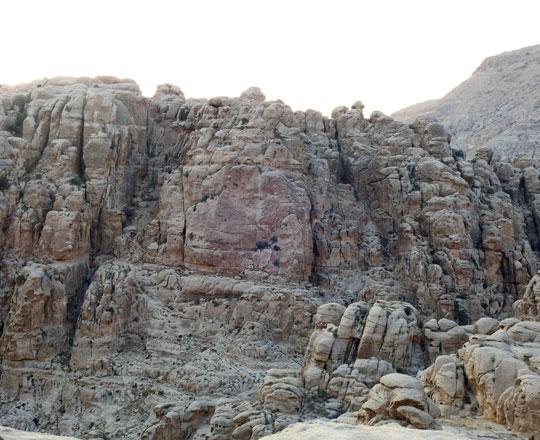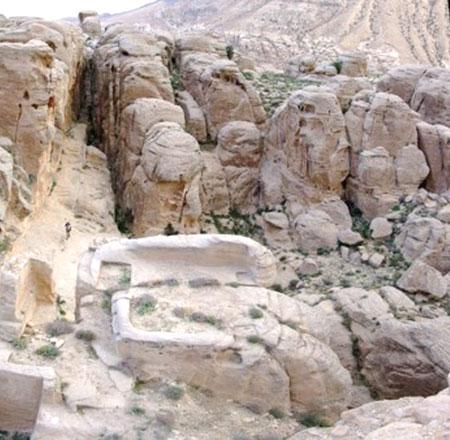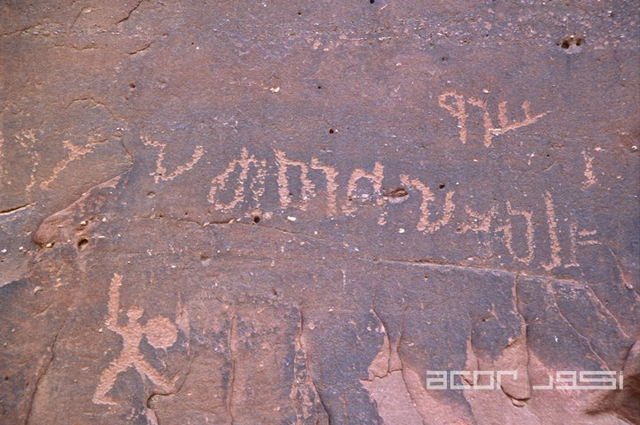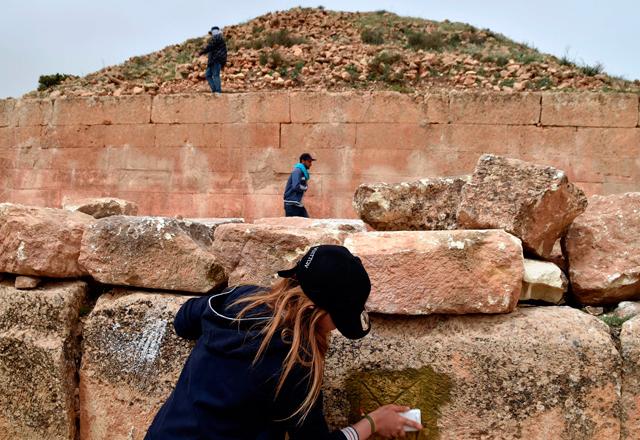You are here
Sela rock inscription captivates Spanish scholar
By Saeb Rawashdeh - Jan 06,2020 - Last updated at Jan 06,2020

Sela is an Edomite-Nabatean mountaintop fortress in the south of Jordan dating back 3,000 years (Photo courtesy of Rocio Da Riva)
AMMAN — An inscription in Sela, south of Jordan, has gripped the attention of scholars, according to a Spanish historian.
Hanging from a cliff on ropes, the inscription, a depiction of Babylonian King Nabonidus (556-539 BC), is carved into an unreachable rock, said Spanish historian Rocio Da Riva, who is currently a professor at the University of Barcelona in Spain, in a recent e-mail interview with The Jordan Times.
Da Riva attributed the complicated access to the relief and its lack of visibility as reasons for it going unnoticed to most visitors to Sela.
It was “discovered” in 1994 by the late Hamed K. Qatamine of Mu'tah University, who was told of the monument's existence by a local person, she said.
At least three teams had studied the monument in situ [its original location] before his team visited the site, she said, elaborating that as the data provided by the previous publications was “not considered sufficient, we wanted to investigate the archaeological context of the monument, and at the same time produce a 3D model of it.
A mission was organised in order to study the inscription and the site of Sela between September 19 and 29, 2018.
Since the inscription and the relief are difficult to reach, as they are carved on a vertical wall 120 metres above the valley, the monument could only be studied by using drones, which are currently banned in Jordan, scaffolding, which is complicated and expensive, or by climbing, she said.
“The relief depicts a standing human figure facing right [King Nabonidus of Babylonia], three astral symbols representing three major deities of the Mesopotamian pantheon are displayed at the upper part of the niche just in front of the figure: A moon [the moon-god Sin], a solar disk [the sun-god Shamash] and the Venus star [the goddess Ishtar],” Da Riva stated.
Da Riva noted that she aspires to integrate the study of Sela into the context of other similar Iron Age sites in southern Jordan in order to obtain a broader picture of the settlement patterns, economic strategies and socio-political organisation of the region's inhabitants during that period.
Related Articles
AMMAN — Overseeing the Edom Plateau, south of Jordan, between Tafila and Busayra, stands the Edomite-Nabataean mountain stronghold, Sela, a
AMMAN — In order to have centralised information about inscriptions from Ancient North Arabia, a group of scholars created “The Online Corpu
TIARET, Algeria — Dating back centuries, Algeria’s pyramid tombs are unique relics of an ancient era, but a dearth of resear














